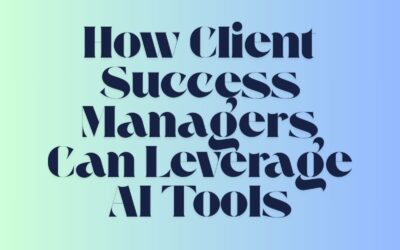For small and service-based business owners, a common concern lingers long after the initial sale—will my customers return? Acquiring new clients is important, but fostering loyalty and cultivating repeat customers is where long-term growth resides.
Research consistently shows the value of repeat customers. According to the Harvard Business Review, acquiring a new customer can cost five to 25 times more than retaining an existing one. Additionally, repeat customers tend to spend more—67% more, according to one estimate.
But how do you ensure that your one-time buyers become repeat purchasers? This blog will guide you through key strategies, best practices, and insights into the art and science of customer retention.
Why Do Repeat Customers Matter?
Before we discuss actionable strategies, it’s essential to understand why repeat customers are crucial to your success:
1. Higher Revenue Per Customer
Repeat customers spend more with each transaction. They trust your brand, are familiar with your offerings, and are more inclined to explore additional services or products.
2. Lower Marketing Costs
Marketing to loyal customers is significantly less expensive than acquiring new ones. And what’s better, satisfied customers often become advocates for your business, driving word-of-mouth referrals.
3. Valuable Insights
Loyal customers provide feedback that reflects deep familiarity with your brand—insights that can guide you to refine products, services, or experiences.
4. Predictable Cash Flow
With a solid base of returning clients, your revenue stream becomes more stable and predictable, allowing you to plan future growth strategies effectively.
What Encourages Repeat Purchases?
The question of “how” to get customers to come back often begins with exceptional customer experience. A study in the Journal of Industrial Distribution & Business highlights that customer satisfaction serves as a key link between customer experience and repeat purchases. Positive interactions with your team, products, and services create a lasting impression, increasing the likelihood of return purchases.
Here are the core components you need to focus on:
- Product quality and variety: Ensure your offerings consistently meet or exceed expectations.
- Convenience: Streamline purchasing processes, offering clear information and multiple communication channels.
- Personalization: Make customers feel understood through custom recommendations or tailored offers.
- Value: Demonstrate your product or service is worth their investment both monetarily and emotionally.
6 Strategies to Encourage Repeat Purchases
1. Elevate Your Customer Experience
Customer experience encompasses everything from the quality of your product to the tone of your response to a support inquiry. Pay attention to all aspects of your customers’ interactions with your brand, both online and offline.
- Online: Ensure your website is user-friendly, fast, and visually appealing. Optimize for mobile experiences as well.
- Offline: Ensure staff is well-trained, polite, and knowledgeable in providing solutions to customers promptly.
Pro Tip:
A seamless shopping environment can significantly boost customer satisfaction, as noted in research from the Journal of Industrial Distribution & Business. Prioritize convenience and efficiency to surpass their expectations.
2. Create a Loyalty Program
Rewarding loyalty is a tried-and-true method of retaining customers. Implement a program that incentivizes repeat purchases through discounts, points, or exclusive rewards.
Examples include:
- A coffee shop offering a free drink after ten purchases.
- A beauty salon giving discounts after a specific number of visits.
Key Reminder: Make these loyalty programs easy to track and redeem, preferably through an app or automated email system.
3. Personalized Follow-Ups
Reach out to your customers post-purchase. A simple thank-you email or a personalized message expressing gratitude goes a long way in building rapport. Include tailored product recommendations based on their purchase history to keep them engaged.
Tools to Consider:
- Email Platforms: Use MailChimp or HubSpot to automate post-purchase emails.
- AI Assistants: Leverage tools like Jasper AI for generating customized follow-ups at scale.
4. Provide Exceptional Post-Sale Support
Nothing destroys loyalty faster than poor post-sale care. Be available for your clients when they need support, ensuring any issues they experience are handled promptly and professionally.
- Include a clear return or refund policy.
- Offer easy-to-find contact information for assistance.
- Conduct regular check-ins, especially for service-based businesses where relationships are key to satisfaction.
5. Engage Through Content and Community
Establish your business as more than just a service provider—position yourself as a thought leader or a trusted resource.
How?
- Publish blogs or newsletters sharing relevant insights or how-to guides.
- Encourage customers to participate in events like webinars or Q&A panels.
- Build a community space, whether a private Facebook group or an on-site forum, where customers can connect and share experiences.
Not only does this build rapport, but it also increases their familiarity with your brand on a deeper level.
6. Analyze Customer Data for Retention Strategies
Customer data can tell you who your most loyal clients are and where you’re losing attention. Use analytics tools like Google Analytics or CRM software to track how often customers return, what they’re purchasing, and when they drop off.
Key Metrics to Monitor:
- Customer Lifetime Value (CLV): How much a customer spends overall during their relationship with you.
- Repeat Purchase Rate: Percentage of customers who come back for another transaction.
- Churn Rate: Percentage of customers who stopped purchasing from you.
Use the insights gathered to tailor strategies specifically aimed at improving these metrics.
Mistakes to Avoid When Fostering Loyalty
- Neglecting Feedback: Ignoring feedback from one-time customers can prevent learning opportunities or changes that retain future clients.
- Overloading Emails: Sending too many promotional emails can feel intrusive. Balance communication with relevant, valuable content.
- Under-delivering: Consistency is critical—don’t promise what you can’t deliver.
Strengthen Your Customer Base Starting Today
Getting customers to return isn’t just about good luck—it’s about fostering meaningful relationships through thoughtful strategies. By refining your customer experience, offering rewards, and analyzing behavior, you can turn first-time buyers into loyal advocates.
If you’d like additional insights into improving customer retention and satisfaction, contact us to explore how our tools and knowledge can guide you.
Here is a Book to get you started.





0 Comments